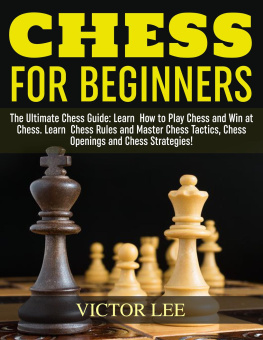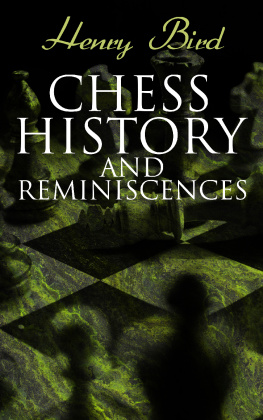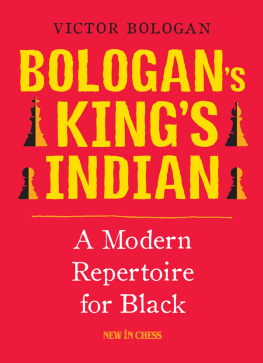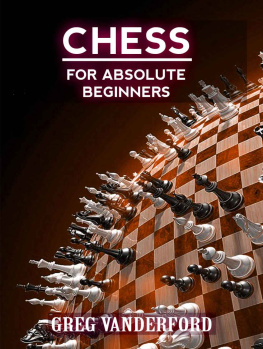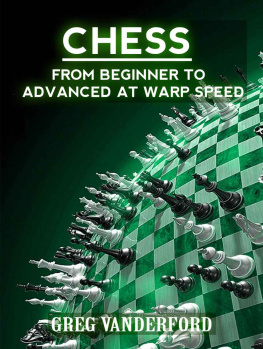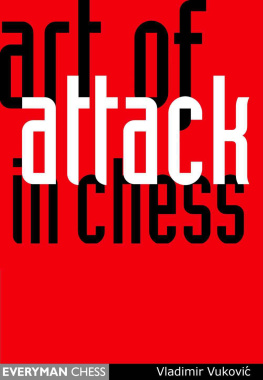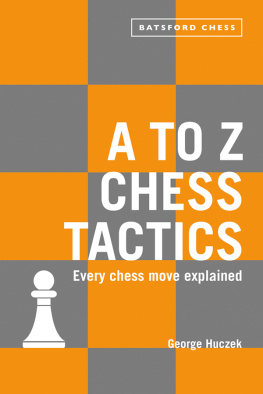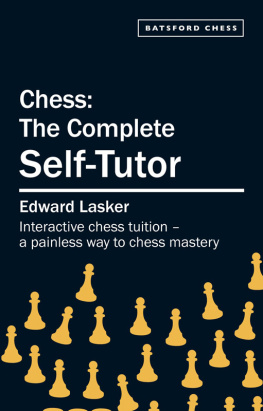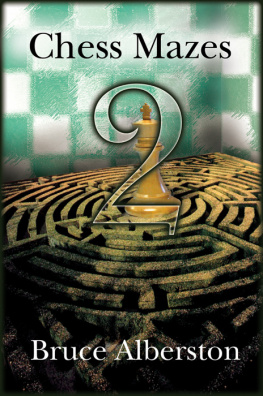Victor Lee - Chess
Here you can read online Victor Lee - Chess full text of the book (entire story) in english for free. Download pdf and epub, get meaning, cover and reviews about this ebook. year: 2017, publisher: Amazing Publisher, genre: Children. Description of the work, (preface) as well as reviews are available. Best literature library LitArk.com created for fans of good reading and offers a wide selection of genres:
Romance novel
Science fiction
Adventure
Detective
Science
History
Home and family
Prose
Art
Politics
Computer
Non-fiction
Religion
Business
Children
Humor
Choose a favorite category and find really read worthwhile books. Enjoy immersion in the world of imagination, feel the emotions of the characters or learn something new for yourself, make an fascinating discovery.
- Book:Chess
- Author:
- Publisher:Amazing Publisher
- Genre:
- Year:2017
- Rating:4 / 5
- Favourites:Add to favourites
- Your mark:
- 80
- 1
- 2
- 3
- 4
- 5
Chess: summary, description and annotation
We offer to read an annotation, description, summary or preface (depends on what the author of the book "Chess" wrote himself). If you haven't found the necessary information about the book — write in the comments, we will try to find it.
Chess — read online for free the complete book (whole text) full work
Below is the text of the book, divided by pages. System saving the place of the last page read, allows you to conveniently read the book "Chess" online for free, without having to search again every time where you left off. Put a bookmark, and you can go to the page where you finished reading at any time.
Font size:
Interval:
Bookmark:
Chess
How To Play Chess For Beginners:
Learn How to Win at Chess - Master Chess Tactics, Chess Openings and Chess Strategies!
T he game of chess is undoubtedly one of the oldest and most enduring form of board games ever known to mankind. With several variants and rules cutting across continents for decades, this amazing game of wits and pure intellect has shaped many generations, influenced war generals in their formation of real life war tactics, enthralled royalty, inspired arts and romance, and brought fame to many in the past.
Of all table games in the world, chess is the only one that the winner emerges out of the measure of his dexterity and ability at play, and not luck. Blackjack, poker, and many other card and board games rely hugely on luck which card is drawn, what part of the dice shows up, etc. Not chess! For this game, its a matter of how high your intelligent quotient (IQ)can carry you, how much insight you have, and how much skill you possess. Its a game where true strength of brainpower is tested, where the power of foresight and careful calculation is all that matters.
There have been countless books on chess and its many intrigues written and published all over the world in almost all languages conceivable, but this e-book stands out. It gives a refreshing insight on what is required to know chess, like it, play it, and be successful in it. This publication proves the fact that you dont need giant textbooks and manuals to be a true chess champion; all thats required are the basics,the necessary instructions and guidelinesthat shows you what really matters in the game.
This assertion is true considering the fact that most, if not all, grandmasters, international masters, and national champions were not really trained form heavy reading of chess strategies, they conquered their territory with the power to be ingenious, creative, and watchful. They are now famous stars because they thought out of the box. That is the ultimate key to winning chess and staying champion for a long time -thinking out of the box.
This is the primary essence of this short, insightful guideline on the worlds most popular board game. Whether you are a high school student or still struggling with grade 5 exams, youll find this book simple and easy to read. The tactics and strategies to winning have been written in a way that would appeal to the everyday boy or woman, Latino, Russian, or African; carpenter, surgeon, or soldier.
The central theme of this e-book is on using what your opponent knows to defeat him/her. Yes; your opponent is not a novice, but let what he/she knows become your major weapon. Let him/her play the game and you earn the victory. Its the ultimate grandmaster method. Welcome aboard.
C HESS RULES, SIMPLIFIED!
Chess boards come in many different colors and sizes today. However, the most fundamental thing that is instantly visible in every single one of them is that the squares carry two distinct colors. One bright, the other dark. Time was when this statement could have read: some black, some white; but with new innovations in materials and colors, almost any two distinct colors can be found on chess boards today. Be that as it may, the traditional white and black still suffices. White for bright squares, and black for dark squares. Well follow this tradition during the course of this book.
There are a total of 64 squares on the board, no matter how large or small they may come. 32 squares are bright while the remaining 32 are dark colored. Crisscrossing each other, these squares fill up the entire board space.
Placing the board properly is key and sacrosanct if the game must be played as is designed to. Therefore, the first white square in front of the player must remain on the far right hand side. Same applies to the player on the opposite.
A cute saying among chess players is White is Right. This is very helpful to remind players that to place the board properly, hence play the game correctly, the board must always be turned in such a way that there is a white square to each players far right hand corner. Its a general rule for amateurs and professionals alike.
It is also important, for the sake of notation and recording games, to name your squares. From the view point of the first player, the board is numbered a, b, c, d, e, f, g, h on the horizontal level, this is the file; and 1, 2, 3, 4, 5, 6, 7, 8 on the vertical level, this is the rank. This is a crucial point to note giving the fact that countless games have been recorded for learning and entertainment purposes and many more are waiting to do so too.
In effect, each square has its own unique name for easy identification. Inasmuch as these names are not written directly on the board, consistent play would make the beginner player to get used to them in no time.
Next task is to set up the pieces.
T o begin, each player is allotted
oneKing,
oneQueen,
twoRooks (Castles),
twoKnights,
twoBishops, and
eightPawns.
It is very common to see beginners set up the pieces incorrectly. So to remember how its done without recourse to any book, follow these anecdotes.
- White is Right that means the board must be placed correctly as highlighted above.
- Rooks stand guard by the castle this tells you to place the two Rooks on the far right and far left squares, respectively. One on the white square on the right, the other on the black square on the left.
- Knights dwell in Castles this indicates that the two Knights should stand next to the Rooks, just in their insides. One on the left white square after the Rook, the other on the right black square after the Rook on the other corner.
- Bishops at the service of royalty next comes the Bishops standing next to the Knights. One on the left black square and the other on the right white square.
- Queen likes her color the Queen is then placed in one of the middle square. To avoid misplacing her, she stays only on her color at this starting point. That is, the white square remaining (in this case). White Queen on white square.
- The Kingbeside his Queen this placement completes the first row. The King stands on his opposite color at the start point. In this case, the last black square in the middle of the row. That is, white King on black square.
For the other player, the task is simply to replicate the above using the color of the pieces and their attendant squares to determine who stays where.
Next task is rather simple. The second row of squares are designed to take each players eight Pawns. They all carry equal powers and move in the same way, so its inconsequential how they are arranged, in so far the row is filled up. They all look alike anyway!
Listed above is the correct way of placing the pieces on a chess board. Its an international convention that makes the game of chess playable between players of different nationalities who do not even understand each others language. Once placed correctly, the game is set to commence.
K nowing the worth and power of your pieces is essential to how far you would go in the game of chess. Many games have been lost because of failure to take note of this factor. Of the six different types of pieces each player is allotted, only the King cannot be valued. This is because it is the crux of the game. The King is the very object why the game is played; once cornered or checkmated and with no other place to run to or other pieces to shield it, the game is over. This does not preclude the fact that it is quite an effective piece in the endgame; it is only less powerful than the Queen and Rook at that point.
Next pageFont size:
Interval:
Bookmark:
Similar books «Chess»
Look at similar books to Chess. We have selected literature similar in name and meaning in the hope of providing readers with more options to find new, interesting, not yet read works.
Discussion, reviews of the book Chess and just readers' own opinions. Leave your comments, write what you think about the work, its meaning or the main characters. Specify what exactly you liked and what you didn't like, and why you think so.

